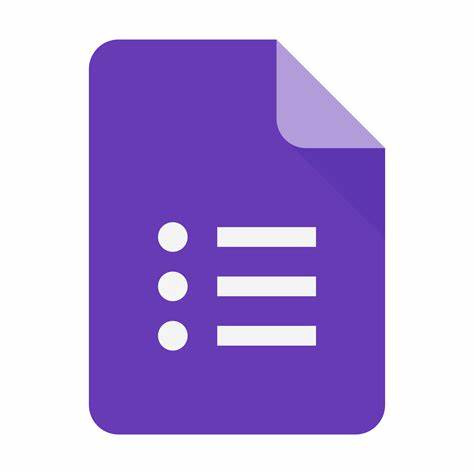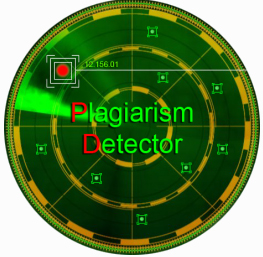IMPLEMENTASI DASHBOARD SMART ENERGY UNTUK PENGONTROLAN RUMAH PINTAR PADA PERANGKAT BERGERAK BERBASIS INTERNET OF THINGS
Abstract
Internet of Things (IoT) adalah sebuah konsep yang dapat memperluas konektivitas yang terhubung dengan jaringan global, Penelitian ini bertujuan untuk membangun perangkat kendali yang memanfaatkan teknologi jaringan internet dengan menghubungkan sebuah perangkat melalui sistem pada perangkat seluler, kontribusi pada penelitian ini adalah membangun perangkat energi pintar yang diimplementasikan pada fitur rumah pintar yang telah dihubungkan dengan perangkat sensor sehingga peralatan elektronik dapat dikontrol sesuai dengan kondisi yang diinginkan secara otomatis atau dikendalikan langsung melalui aplikasi android. Berdasarkan hasil pengujian yang dilakukan pada dashboard smart energy bahwa pada aspek usability 89%, functionality 93% dan reliability 77%, hasil pada pengujian aspek efficiency tahap akhir pada dashboard smart energy memperolah tingkat efesiensi CPU tertinggi pada level 28% dan stabil pada persentasi 10% dengan efesiensi memori sebesar 47.7MB Kesimpulan dari penelitian ini adalah bahwa teknologi IoT dapat mempermudah dalam hal pengendalian perangkat listrik.
Full Text:
PDFReferences
Ahmad Wahid, “Analisis Kapasitas Dan Kebutuhan Daya Listrik Untuk Menghemat Penggunaan Energi Listrik Di Fakultas Teknik Universitas Tanjungpura,” J. Tek. Elektro UNTAN, vol. 2, no. 1, 2014.
K. Maslichah, “Hemat Energi Listrik: Studi Kasus Di Badan Diklat Provinsi Banten,” J. Lingk. Widyaiswara, vol. 3, no. 1, pp. 47–52, 2016, [Online]. Available: http://juliwi.com/published/E0301/Juliwi0301_47-52.pdf.
I. G. P. M. Eka Putra, I. A. D. Giriantari, and L. Jasa, “Monitoring Penggunaan Daya listrik Sebagai Implementasi Internet of Things Berbasis Wireless Sensor Network,” Maj. Ilm. Teknol. Elektro, vol. 16, no. 3, p. 50, 2017, doi: 10.24843/mite.2017.v16i03p09.
A. González-Vidal, V. Moreno-Cano, F. Terroso-Sáenz, and A. F. Skarmeta, “Towards Energy Efficiency Smart Buildings Models Based on Intelligent Data Analytics,” Procedia Comput. Sci., vol. 83, no. BigD2M, pp. 994–999, 2016, doi: 10.1016/j.procs.2016.04.213.
D. Sciuto and A. A. Nacci, “On How to Design Smart Energy-Efficient Buildings,” Proc. - 2014 Int. Conf. Embed. Ubiquitous Comput. EUC 2014, no. April, pp. 205–208, 2014, doi: 10.1109/EUC.2014.37.
B. Banerjee, A. Seetharam, A. Mukherjee, and M. Kanti Naskar, “Characteristic time routing in information centric networks,” Comput. Networks, vol. 113, pp. 148–158, 2017, doi: https://doi.org/10.1016/j.comnet.2016.12.009.
Z. Kamal, A. Mohammed, E. Sayed, and A. Ahmed, “Internet of things applications, challenges and related future technologies,” World Sci. News, vol. 67, no. 2, pp. 126–148, 2017, [Online]. Available: www.worldscientificnews.com.
V. Sharma and R. Tiwari, “A review paper on ‘IOT’ & It‟s Smart Applications,” Int. J. Sci. Eng. Technol. Res., vol. 5, no. 2, pp. 472–476, 2016, [Online]. Available: http://ijsetr.org/wp-content/uploads/2016/02/IJSETR-VOL-5-ISSUE-2-472-476.pdf.
F. Jindal, R. Jamar, and P. Churi, “Future and Challenges of Internet of Things,” Int. J. Comput. Sci. Inf. Technol., vol. 10, no. 2, pp. 13–25, 2018, doi: 10.5121/ijcsit.2018.10202.
A. Strielkina, V. Kharchenko, and D. Uzun, “A markov model of healthcare internet of things system considering failures of components,” CEUR Workshop Proc., vol. 2104, pp. 530–543, 2018.
R. Khan, S. U. Khan, R. Zaheer, and S. Khan, “Future internet: The internet of things architecture, possible applications and key challenges,” Proc. - 10th Int. Conf. Front. Inf. Technol. FIT 2012, no. December, pp. 257–260, 2012, doi: 10.1109/FIT.2012.53.
D. Jain, P. V. Krishna, and V. Saritha, “A Study on Internet of Things based Applications,” pp. 886–888, 2012, [Online]. Available: http://arxiv.org/abs/1206.3891.
S. P. S. Brighty, P. Selvanayaki, and M. Kiruthika, “Survey on Challenges and Applications of Internet-of-Things,” vol. 6, no. 11, pp. 1294–1302, 2015.
M. Bilal, “A Review of Internet of Things Architecture, Technologies and Analysis Smartphone-based Attacks Against 3D printers.,” CoRR, vol. abs/1708.0. 2017, [Online]. Available: http://arxiv.org/abs/1708.04560.
P. Sethi and S. R. Sarangi, “Internet of Things: Architectures, Protocols, and Applications,” J. Electr. Comput. Eng., vol. 2017, p. 9324035, 2017, doi: 10.1155/2017/9324035.t
V. Anand, “a R Obust C Lient a Rchitecture on a Ndroid T O C Ater E Nd -2-E Nd R Eal - Time C Ontent M Anagement and P Ersonalized Iptv,” Int. J., vol. 2, no. 3, pp. 67–78, 2010.
H. Pieterse, M. S. Olivier, and R. P. Van Heerden, “Reference architecture for android applications to support the detection of manipulated evidence,” SAIEE Africa Res. J., vol. 107, no. 2, pp. 92–103, 2016, doi: 10.23919/saiee.2016.8531545.
S. Holla and M. M. Katti, “Android Based Mobile Application Development And Its Security,” Continuum (N. Y)., vol. 3, no. 3, pp. 486–490, 2012, doi: 10.1080/10304312.2012.706462.
J. Khan and S. Shahzad, “Android Architecture and Related Security Risks,” Asian J. Technol. Manag. Res., vol. 05, no. March, pp. 2249–892, 2016.
A. M. A. P. P. Analytics, “Introducing Firebase Analytics.”
M. K. Parai, B. Das, and G. Das, “An Overview of Microcontroller Unit : From Proper Selection to Specific Application,” no. 6, pp. 228–231, 2013.
E. Media and M. Rif, “Internet of Things ( IoT ): BLYNK Framework for Smart Home,” vol. 2019, pp. 579–586, 2019, doi: 10.18502/kss.v3i12.4128.
A. Srivastava, A. Prakash, and R. Tripathi, “Location based routing protocols in VANET: Issues and existing solutions,” Veh. Commun., vol. 23, p. 100231, 2020, doi: https://doi.org/10.1016/j.vehcom.2020.100231.
J. P. Sipani, R. H. Patel, T. Upadhyaya, and V. T. Patel, “Temperature & Humidity Monitoring & Control System Based on Arduino and Sim900a Gsm Shield,” Int. J. Electr. Electron. Data Commun., vol. 5, no. 11, pp. 2320–2084, 2017, [Online]. Available: http://www.iraj.in/journal/journal_file/journal_pdf/1-423-151703294362-68.pdf.
T. C. de Sousa, L. Kelvin, C. Dias Neto, and C. Giovanni N. de Carvalho, “A Formal Semantics for Use Case Diagram Via Event-B,” J. Softw., vol. 12, no. 4, pp. 189–200, 2017, doi: 10.17706/jsw.12.3.189-200.
T. Abdelaziz, M. Elammari, and W. Bani, “Applying the ISO Standard in Assessing the Quality of Software Systems,” Adv. Comput. Sci. Inf. Technol., vol. 2, no. 3, pp. 28–32, 2015.
J. F. Andry, J. S. Suroso, and D. Y. Bernanda, “Improving quality of smes information system solution with ISO 9126,” J. Theor. Appl. Inf. Technol., vol. 96, no. 14, pp. 4610–4620, 2018.
P. Botella et al., “ISO/IEC 9126 in practice: what do we need to know?,” Softw. Meas. Eur. Forum 2004, pp. 297–306, 2004, [Online]. Available: http://www.lsi.upc.es/~jmarco/publications_pdfs/SMEF2004.pdf.
G. Wang, D. Y. Bernanda, J. F. Andry, A. Nurul Fajar, and Sfenrianto, “Application Development and Testing Based on ISO 9126 Framework,” J. Phys. Conf. Ser., vol. 1235, no. 1, 2019, doi: 10.1088/1742-6596/1235/1/012011.
B. Behkamal, M. Kahani, and M. K. Akbari, “Customizing ISO 9126 quality model for evaluation of B2B applications,” Inf. Softw. Technol., vol. 51, no. 3, pp. 599–609, 2009, doi: 10.1016/j.infsof.2008.08.001.
DOI: https://doi.org/10.33365/jti.v15i1.954
Refbacks
- There are currently no refbacks.
Copyright (c) 2021 Syaiful Ahdan, Erliyan Redy Susanto

This work is licensed under a Creative Commons Attribution-ShareAlike 4.0 International License.
JURNAL TEKNOINFO
Published by Universitas Teknokrat Indonesia
Organized by Prodi S1 Informatika FTIK Universitas Teknokrat Indonesia
W: http://ejurnal.teknokrat.ac.id/index.php/teknoinfo/index
E : teknoinfo@teknokrat.ac.id.
Jl. Zainal Abidin Pagaralam, No.9-11, Labuhan Ratu, Bandarlampung

This work is licensed under a Creative Commons Attribution-ShareAlike 4.0 International License.
Jumlah Pengunjung : View Teknoinfo StatsCounter



















